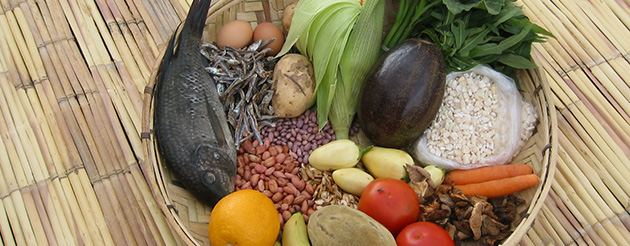MINIMUM DIETARY DIVERSITY
Why in news?:
An indicator designed by the World Health Organization (WHO) to assess diet diversity as part of infant and young child feeding (IYCF) practices among children 6-23 months old.
Why it is a concern?:
Inadequate dietary diversity and meal frequency contribute to child malnutrition in India, including stunting and micronutrient deficiencies.
What is Minimum Dietary Diversity?: It refers to a recommended standard set by the World Health Organization (WHO) for children aged 6-23 months.
It suggests that during the previous day or within 24 hours, children should consume foods and beverages from at least five of the eight defined food groups.
Aim:To ensure that children receive a diverse range of nutrients to meet their nutritional needs and promote their healthy growth and development.
Status in India:A significantly low proportion of children (15 per cent) who meet MDD, followed by Nepal (34 per cent), which suggests that South Asian countries are trailing behind in terms of MDD
Need of MDD:Poor-quality diets during the first two years of life can have long-lasting effects on a child’s health and development. India has high rates of child malnutrition, with a low proportion of children meeting the MDD.
WHO initiative:WHO has developed guidelines for Infant and Young Child Feeding (IYCF) practices, with MDD being one of the core indicators. The eight food groups used for the tabulation of this indicator are:
|
MDD Food Groups |
|
|
1. |
Breast milk |
|
2. |
Grains, roots, and tubers |
|
3. |
Legumes and nuts |
|
4. |
Dairy products |
|
5. |
Flesh foods |
|
6. |
Eggs |
|
7. |
Vitamin A rich fruits and vegetables |
|
8. |
Other fruits and vegetables |




.jpg)
.jpg)
.jpg)
.jpg)
.jpg)




.jpg)
